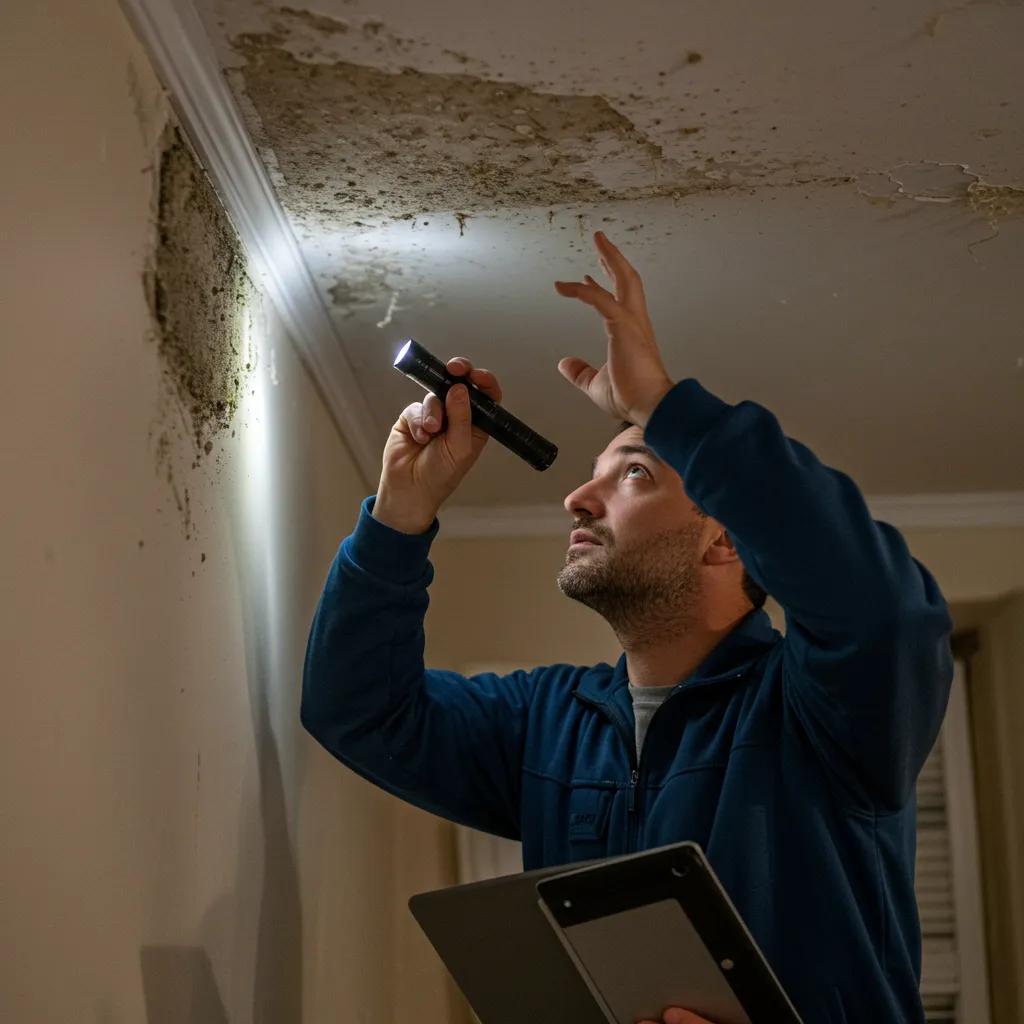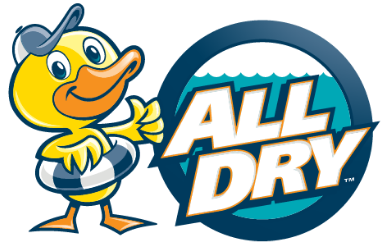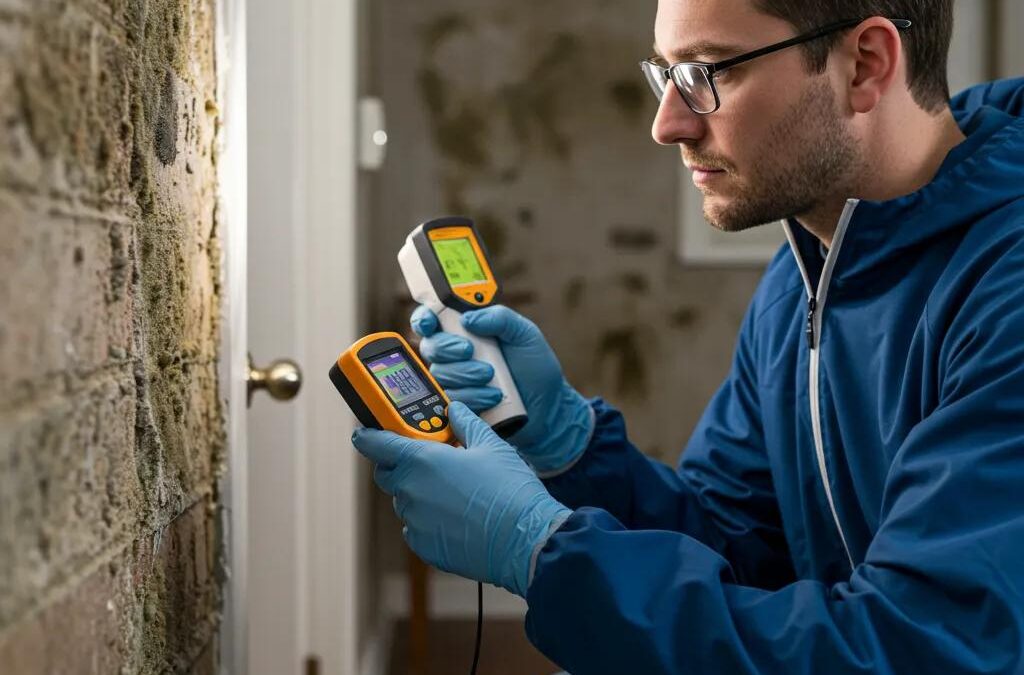How to Evaluate Mold Remediation Effectiveness: Complete Mold Remediation Assessment Process for Homeowners and Business Owners
Did you know that nearly half of U.S. properties harbor hidden mold after cleanup, putting occupants at risk and lowering resale value? Evaluating mold remediation effectiveness ensures your home or business is truly safe and dry. In this guide on the mold remediation assessment process, you will discover how to define success, conduct systematic inspections, verify results through clearance testing, recognize warning signs of failure, leverage All Dry Services’ IICRC-compliant protocols in Las Vegas, follow a homeowner checklist, and budget for post-remediation assessment. By mastering these steps, you’ll secure healthier air quality, protect your property’s value, and gain peace of mind.
What Is Mold Remediation Effectiveness and Why Is It Important?
Mold remediation effectiveness measures whether all mold colonies have been removed and moisture sources controlled to prevent recurrence. Accurate verification avoids health issues, structural damage, and costly rework—for example, an undetected leak behind drywall can reignite a mold problem. Fully understanding this concept lays the foundation for a thorough assessment and guides homeowners and business owners through each critical checkpoint.
How Is Mold Remediation Effectiveness Defined?
Mold remediation effectiveness is defined by the absence of visible mold, normalized moisture readings, and spore counts returned to baseline ecological levels. This definition combines physical inspection, moisture mapping, and laboratory-verified clearance testing to confirm that treated areas meet industry standards before reoccupancy. Achieving this triad ensures both safety and compliance with IICRC S520 guidance.
Why Should Homeowners and Business Owners Evaluate Mold Remediation Success?
Homeowners and business owners should evaluate success to safeguard health, maintain property value, and avoid liability. Exposure to residual mold spores can trigger asthma, allergies, and long-term respiratory issues, while unchecked moisture undermines structural integrity. Verifying remediation results delivers the confidence needed to resume daily activities and prevents future financial losses.
Health Risks of Mold Exposure
Exposure to mold can trigger a range of health issues, including respiratory problems, allergic reactions, and asthma exacerbation. The presence of mold spores in indoor environments can lead to both short-term and long-term health consequences, emphasizing the need for thorough remediation and assessment to protect occupants.
What Are the Risks of Ineffective Mold Remediation?
Ineffective remediation can lead to recurring mold growth, persistent musty odors, and elevated spore levels that compromise indoor air quality. Over time, untreated moisture weakens building materials, invites pests, and may result in infected HVAC systems. The financial impact includes repeated cleanup costs, diminished resale value, and potential insurance disputes stemming from hidden damage.
What Are the Key Steps in the Mold Remediation Assessment Process?
A robust mold remediation assessment process follows four key steps: visual inspection, moisture assessment, air and surface testing, and laboratory analysis. Together these steps form a closed-loop verification that prevents oversight and confirms complete remediation.
How Is a Visual Inspection Conducted to Detect Mold and Moisture?

A visual inspection begins with scanning walls, ceilings, and structural cavities for discoloration, staining, or obvious mold growth. Inspectors use high-intensity lighting and moisture indicators to reveal water intrusion points around pipes, windows, and HVAC ducts. This initial survey pinpoints areas requiring deeper evaluation and directs targeted moisture measurement.
Why Is Moisture Assessment Critical After Mold Removal?
Moisture assessment quantifies residual dampness in building materials using moisture meters and infrared imaging to ensure water sources are eliminated. Without this check, hidden wet zones can allow mold to rebound within days. Verifying that levels fall below 15% in wood and below 1.5% in plaster guarantees that the remediation environment is ready for clearance testing.
What Types of Air and Surface Testing Are Used in Post-Remediation Verification?
Air and surface testing provide objective evidence of mold spore levels and residual contamination.
The table below compares common testing methods, their purpose, and key performance indicators:
These tests confirm clearance criteria and prepare samples for laboratory interpretation, seamlessly leading into result analysis.
How Are Laboratory Analysis and Test Results Interpreted?
Laboratory analysis translates raw spore counts and species identification into actionable clearance reports. Certified labs compare results against baseline outdoor fungal ecology, flagging elevated levels or presence of toxigenic species. Clear interpretation ensures that any deviations prompt targeted re-remediation before safe re-occupancy is certified.
How Does Mold Clearance Testing Confirm Remediation Success?
Mold clearance testing, also known as post-remediation verification, provides independent confirmation that treated areas meet safety benchmarks. By combining onsite testing with lab-validated results, clearance testing establishes objective certification for future occupiers.
What Is Mold Clearance Testing and How Is It Performed?
Mold clearance testing is performed after visible mold removal and drying protocols are complete. Technicians collect air and surface samples using calibrated pumps and sterile swabs, then send these to an accredited lab. A professional clearance report details spore counts, species detected, and comparison to established limits, forming the final go-ahead for re-entry.
What Are the Standards for Mold Clearance Testing?
Clearance testing follows IICRC S520 standards, which define acceptable spore count ratios and moisture thresholds for residential and commercial settings. By adhering to procedural checklists—such as using control samples, ensuring negative air pressure, and documenting chain-of-custody—All Dry Services ensures that each clearance test meets or exceeds industry benchmarks.
IICRC Standards for Mold Remediation
The IICRC S520 standard provides a comprehensive framework for mold remediation, including detailed procedures for inspection, assessment, and clearance testing. Adherence to these standards ensures that remediation efforts are effective and that treated areas are safe for re-occupancy, minimizing health risks and property damage.
How Do Professionals Use Clearance Testing to Ensure Safe Re-Occupancy?
Certified remediators use clearance testing results to verify that remediation goals have been met before removing containment barriers. This unbiased assessment prevents premature re-entry and provides clients with a formal certificate of clearance. The process supports compliance documentation for insurance claims and sale transactions.
What Are the Common Signs of Failed Mold Remediation?
Failed remediation often reveals itself through visible mold recurrence, lingering odors, or persistent health complaints. Early detection of these signs guides prompt re-intervention and protects occupants from ongoing exposure.
How to Identify Visible Mold Recurrence and Lingering Musty Odors?
Visible mold recurrence appears as new spots of discoloration on walls, ceilings, or behind baseboards. Lingering musty odors indicate subsurface growth in concealed areas. Using odor-detecting devices and thorough re-inspection in hidden cavities helps catch failures before they spread further.
What Health Symptoms Indicate Possible Remediation Failure?
Ongoing respiratory irritation, allergy flare-ups, and unexplained headaches signal that spore levels remain elevated. Asthmatic individuals may notice increased wheezing after spending time indoors. Recognizing these symptoms prompts immediate air testing and professional evaluation.
When Should You Consider Re-Remediation or Further Testing?
If visible mold returns, moisture readings exceed safe thresholds, or clearance reports identify spikes in spore counts, re-remediation is essential. Schedule further testing as soon as symptoms appear or samples fail clearance criteria to minimize structural and health impacts.
How Does All Dry Services Ensure Mold Remediation Effectiveness in Las Vegas?
All Dry Services combines local expertise with IICRC-certified protocols to deliver comprehensive mold remediation assessment and verification in the Las Vegas area. Rigorous adherence to national standards and proprietary quality checks guarantees exceptional results and client satisfaction.
How Does All Dry Services Follow IICRC S520 Standards?
All Dry Services rigorously applies IICRC S520 procedures, including establishing negative air containment, using HEPA filtration, and documenting each step with photographic and written records. This structured approach aligns every phase—from initial inspection to final clearance—ensuring reproducible outcomes and regulatory compliance.
What Professional Mold Remediation and Assessment Services Are Offered?
All Dry Services provides end-to-end solutions: initial moisture mapping, full containment and demolition, thorough mold removal, drying protocols, post-remediation testing, and clearance certification. Each service is delivered by technicians trained in environmental sampling and equipped with state-of-the-art instruments for accurate results.
Why Choose All Dry Services for Post-Remediation Evaluation?
Choosing All Dry Services means benefiting from rapid emergency response, transparent pricing, and a certified team that prioritizes occupant health. With 24/7 availability in Las Vegas and a track record of successful clearance certifications, clients gain immediate assistance and documented proof of mold remediation effectiveness.
What Is Included in a Mold Remediation Effectiveness Checklist for Homeowners?
A homeowner’s checklist streamlines self-verification steps and ensures nothing is overlooked. By following these criteria, property owners can support professional assessments and document each phase for their records.
What Visual Inspection Points Should Homeowners Check?
Homeowners should examine areas around plumbing, HVAC vents, and window sills for new discoloration or warping. Inspect crawl spaces, attics, and behind appliances using a flashlight to detect hidden growth. Photograph and log any findings for reference during professional evaluation.
How to Use Moisture Meters and Monitor Humidity Levels?
Use a penetrating moisture meter to measure wood studs and drywall panels, ensuring readings fall below 15%. Place a digital hygrometer in key rooms to confirm relative humidity stays under 50%. Regular monitoring supports early detection and prevents new mold development.
Why Is Documentation Important in Mold Remediation Verification?
Maintaining written logs, photographs, and test reports creates a transparent record of remediation efforts. Detailed documentation supports insurance claims, real estate transactions, and future maintenance planning. Organized records also facilitate swift follow-up if re-testing or re-remediation becomes necessary.
How Much Does Post-Remediation Mold Assessment Cost and What Factors Affect Pricing?
Investing in a post-remediation mold assessment provides lasting health and property value returns. Costs vary based on service complexity, property size, and testing methods selected, but understanding typical ranges helps homeowners budget effectively.
What Are Typical Cost Ranges for Mold Clearance Testing and Inspection?
Post-remediation costs range from visual inspection fees of $150–$400 to testing services of $300–$600 per sample, with bulk sampling and lab analysis adding additional charges as needed. Transparent estimates ensure clients know exactly what to expect before scheduling an assessment.
Which Factors Influence the Cost of Mold Remediation Assessment?
Property area, number of test locations, type of sampling (air, surface, bulk), and turnaround time all influence pricing. Accessibility challenges—such as confined crawl spaces—and the need for multiple containment zones can also raise costs. Clients receive itemized quotes detailing each factor.
How Is Mold Remediation Assessment an Investment in Health and Property Value?
A thorough assessment prevents unseen mold from undermining structural integrity and occupant well-being. Certified clearance reports bolster real estate appraisals and reduce liability risk. Investing in professional verification today yields savings on future repairs and supports higher resale prices.
All Dry Services stands ready to verify your mold remediation results with prompt scheduling, IICRC-certified technicians, and transparent reporting. Our comprehensive mold remediation assessment process safeguards your health, protects your property investment, and restores your peace of mind. Contact All Dry Services today for immediate assistance and ensure your home or business meets the highest standards of mold remediation effectiveness. Trust our expertise to deliver a safe, dry environment and lasting protection for your Las Vegas property.

